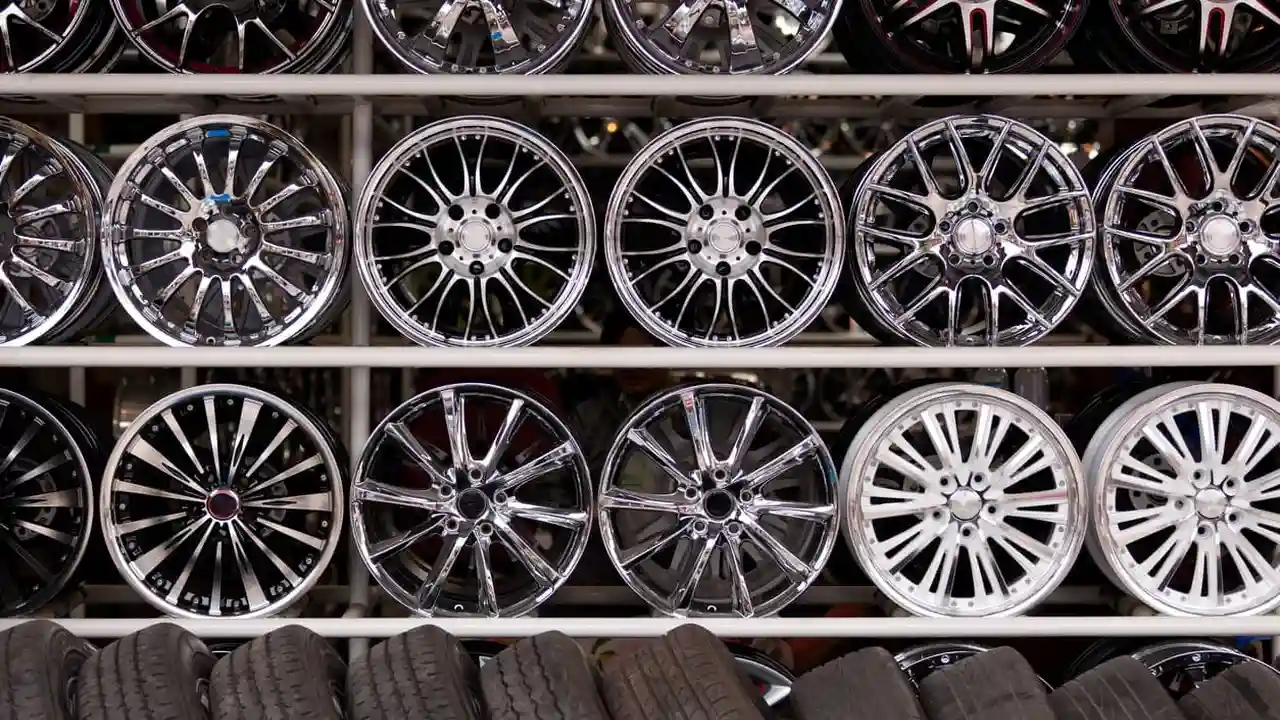Body Kit Maintenance: Keeping Your Investment Looking Great

Discover the importance of body kit maintenance to protect your investment. Learn essential cleaning and care tips to prevent damage and fading. Keep your body kit looking its best for years to come.
Why Body Kit Maintenance Matters The Long Game
Alright, so you've splurged on a sweet body kit to transform your ride. It looks amazing, right? But let's face it, that sleek new look isn't going to last forever if you don't take care of it. Think of your body kit as an investment – a pretty significant one at that. Just like you wouldn't neglect your engine or tires, you can't ignore your body kit. Regular maintenance isn't just about aesthetics; it's about protecting your investment and ensuring your kit lasts for years to come. Sun, rain, road debris – they all take their toll. Neglect your kit, and you'll be looking at fading, cracks, and a whole lot of regret. Let's dive into how to keep that body kit looking fresh.
Essential Body Kit Cleaning Tips Getting Rid of Grime
First things first, let's talk cleaning. This isn't just about a quick rinse at the car wash. We're talking about a proper cleaning routine that will keep your body kit looking its best. Here's the lowdown:
- Frequency: Aim to wash your car, including the body kit, at least every two weeks. If you live in an area with harsh weather or lots of road salt, you might want to increase that to once a week.
- The Right Soap: Don't use dish soap! It's too harsh and can strip away wax and protective coatings. Invest in a quality car wash soap specifically designed for automotive paint. Meguiar's Gold Class Car Wash is a solid choice, and you can find it for around $10-15.
- The Two-Bucket Method: This is crucial for preventing scratches. Fill one bucket with soapy water and the other with clean water. Dip your wash mitt into the soapy water, wash a section of your car, then rinse the mitt in the clean water bucket before dipping it back into the soap. This prevents you from transferring dirt and grime back onto your car's paint.
- Wash Mitts: Use a microfiber wash mitt. They're soft, absorbent, and won't scratch your paint like sponges can. A good microfiber mitt will set you back about $10.
- Drying: Don't let your car air dry – it will leave water spots. Use a microfiber drying towel to gently blot the water away. These towels are super absorbent and won't scratch your paint. Expect to pay around $15-20 for a quality drying towel.
Protecting Your Body Kit From the Elements Weatherproofing
Cleaning is just the first step. You also need to protect your body kit from the elements. Here's how:
- Waxing: Waxing your car, including the body kit, is essential for protecting the paint from UV rays, acid rain, and other environmental contaminants. Apply a coat of wax every 2-3 months. Meguiar's Ultimate Wax is a popular choice and costs around $20.
- Sealants: For even longer-lasting protection, consider using a paint sealant. Sealants provide a tougher barrier than wax and can last for up to six months. Chemical Guys JetSeal is a great option and costs around $30.
- Ceramic Coatings: If you're really serious about protection, consider a ceramic coating. These coatings provide years of protection and are extremely resistant to scratches and chemicals. However, they're also the most expensive option, with professional application costing several hundred dollars. DIY kits are available, but they require careful preparation and application.
- Parking Smart: Whenever possible, park your car in a garage or under a carport to protect it from the sun and rain. If you have to park outside, try to park in the shade.
Dealing With Specific Body Kit Materials Material Matters
The type of material your body kit is made from will affect how you care for it. Here's a breakdown:
- Fiberglass: Fiberglass is relatively inexpensive but can be brittle and prone to cracking. Use a wax or sealant specifically designed for fiberglass. Avoid using harsh chemicals or abrasive cleaners.
- Polyurethane: Polyurethane is more flexible and durable than fiberglass. It's also more resistant to cracking and chipping. You can use most car care products on polyurethane, but always test in an inconspicuous area first.
- Carbon Fiber: Carbon fiber is lightweight and strong, but it's also expensive and can be prone to fading if exposed to UV rays. Use a wax or sealant specifically designed for carbon fiber. Avoid using abrasive cleaners.
Product Recommendations and Comparisons Seeing is Believing
Let's get down to some specific product recommendations. These are products I've either used myself or have seen recommended by other car enthusiasts.
Meguiar's Gold Class Car Wash Soap
Price: $10-15
Use Case: Regular car washing. This soap is gentle on paint but effective at removing dirt and grime.
Comparison: Compared to cheaper car wash soaps, Meguiar's Gold Class is more concentrated and provides better lubrication, reducing the risk of scratches.
Chemical Guys Microfiber Wash Mitt
Price: $10
Use Case: Washing your car without scratching the paint. The microfiber material is soft and absorbent.
Comparison: Compared to sponges, microfiber mitts are less likely to trap dirt and scratch your paint. They're also more durable and will last longer.
Meguiar's Ultimate Wax
Price: $20
Use Case: Protecting your paint from UV rays and environmental contaminants. This wax is easy to apply and provides a long-lasting shine.
Comparison: Compared to older waxes, Meguiar's Ultimate Wax is a synthetic wax that provides better protection and lasts longer. It's also easier to apply and remove.
Chemical Guys JetSeal
Price: $30
Use Case: Providing even longer-lasting protection than wax. This sealant can last for up to six months.
Comparison: Compared to wax, JetSeal provides a tougher barrier and is more resistant to scratches and chemicals. However, it's also slightly more difficult to apply.
Dealing With Scratches and Chips Touch Up Time
No matter how careful you are, scratches and chips are inevitable. Here's how to deal with them:
- Touch-Up Paint: For small scratches and chips, use touch-up paint that matches your car's color. Clean the area thoroughly, apply the paint in thin layers, and let it dry completely.
- Scratch Removers: For minor scratches, you can use a scratch remover. These products contain mild abrasives that polish away the scratches. Meguiar's ScratchX is a popular choice.
- Professional Repair: For deep scratches or large chips, it's best to take your car to a professional body shop. They have the tools and expertise to repair the damage properly.
Specific Scenarios and Solutions Real World Problems
Let's look at some specific scenarios you might encounter and how to deal with them:
- Bird Droppings: Bird droppings are highly acidic and can damage your paint if left untreated. Remove them as soon as possible with a car wash soap and water.
- Bug Splatter: Bug splatter can also damage your paint. Use a bug and tar remover to soften the splatter before washing it off.
- Road Tar: Road tar can be difficult to remove. Use a tar remover specifically designed for automotive paint.
- Tree Sap: Tree sap can also be difficult to remove. Use a tree sap remover or a mixture of rubbing alcohol and water.
- Salt: If you live in an area with road salt, be sure to wash your car frequently to prevent corrosion. Use a car wash soap that is designed to remove salt.
DIY vs Professional Detailing Weighing the Options
You can definitely handle most body kit maintenance yourself. But sometimes, it's worth it to call in the pros. Here's when to consider professional detailing:
- Severe Damage: If your body kit has severe scratches, cracks, or other damage, a professional body shop can repair it properly.
- Ceramic Coating: Applying a ceramic coating is a complex process that requires careful preparation and application. It's best left to the professionals.
- You're Short on Time: If you don't have the time or patience to detail your car yourself, a professional detailer can do it for you.
Regular Inspections Catching Problems Early
Finally, make it a habit to regularly inspect your body kit for any signs of damage. Look for cracks, chips, fading, or loose fasteners. Catching problems early can prevent them from becoming more serious and expensive to repair.
The Bottom Line Keep it Clean Keep it Protected
Maintaining your body kit isn't rocket science, but it does require some effort. By following these tips, you can keep your body kit looking its best for years to come. Remember, a little bit of maintenance goes a long way in protecting your investment and keeping your ride looking sharp.
:max_bytes(150000):strip_icc()/277019-baked-pork-chops-with-cream-of-mushroom-soup-DDMFS-beauty-4x3-BG-7505-5762b731cf30447d9cbbbbbf387beafa.jpg)






